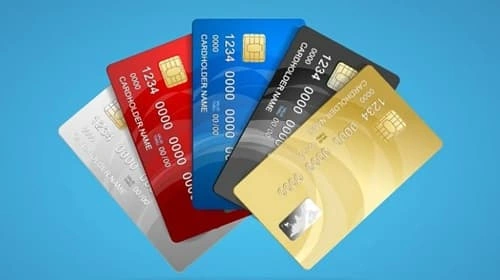We wouldn’t be wrong if we say that the global economy or the world we live in nowadays is functioning super well because of business happening everywhere and at every time. And if you’re a student getting to know about the business scene, then you may be looking at it from a limited perspective, but in reality, there are actually many different types of businesses out there. Like B2B, B2C, C2C, B2G and whatnot. So, if that has gotten you a bit confused, well, worry not because we’re here to share with you a detailed look at different business models, and today, we have picked the B2B (Business-to-Business) Business Model. Alright, let’s see the definition of it, real-world examples, advantages, and disadvantages, so you can get the full picture and understand it all in a much better way.
What Is B2B, Really?

Keeping things simple, a B2B model (meaning business-to-business) is when a company sells products or services to another company. It is not sold directly to the consumers, but to the businesses. For instance, it could be a software company that sells CRM software to the sales department of a company or a factory that dispatches raw materials to other factories. B2B is what gets the ball rolling.
The thing is, this kind of business model has actually always existed; however, the advent of digital tools and global platforms has made it possible for small and big companies to collaborate with partners from any part of the world. Get to know more about it.
Real-World Examples of B2B
Here’s what B2B looks like in real life:
- Salesforce: Sells cloud-based software to other businesses.
- Boeing: Builds and sells planes to airlines, not passengers.
- Alibaba.com: Connects suppliers in China with retailers worldwide.
- Amazon Business: Let institutions bulk-buy everything from office supplies to medical gloves.A
Even on a local level, it’s everywhere. A bakery buying flour from a local mill? That’s B2B too.
B2B Business Model Advantages
1. Bigger Orders, Bigger Revenue
Bulk purchases are typical for businesses, and they often do that. They don’t just buy 1 or 2 units, rather they make big orders of, for instance, boxes, crates, or truckloads of products. In such a way, you will get a bigger turnover per trade and fewer customers to reach your sales goals.
2. Long-Term Clients
B2B buyers are not known to switch suppliers regularly. Typically, they stick with the same vendor for a long time, which can be from several months to even a few years. Consequently, the company is assured of a steady flow of revenue as well as having a solid base to work with. There are several research findings that indicate a B2B customer who is loyal can increase their spend by as much as 20% consecutively per annum.
3. Global Reach Made Simple
Because of eCommerce platforms and online marketplaces, it is possible for you to sell all over the world without the need of establishing a physical outlet. It is very easy for a supplier in India to ship to a buyer in the U.S., they only need a few clicks.
4. High-Value Niches
If your business is designed to fix one particular issue, for instance, providing software for logistics companies, then you are definitely in a good place. Those who operate in niches have fewer competitors and are also able to ask for higher prices.
5. Easier Forecasting
B2B transactions are usually the type of deals where agreements are made beforehand. Such a certainty is very helpful for the supply chain management part. Besides that, several businesses rely on forecasting instruments to heighten the precision of historical sales data.
6. Targeted Marketing
B2B companies do not mass advertise; they concentrate on a defined group of potential clients only. By using marketing that is based on accounts, one gets more effective outcomes with less input.
B2B Business Model Disadvantages
1. Longer Sales Cycles
B2B transactions are not a quick sell. It might even take months from first contact to agreement signing. Latest research shows that the B2B sales process takes around four months on average. The larger the deal, the longer it may extend and exceed one year.
2. Higher Customer Acquisition Costs
It requires more work to connect with business clients like the process involves sales teams, demonstrations, presentations, trade shows, and more. As a result, the cost of obtaining one B2B client is typically 5 to 10 times higher than that of a B2C customer.
3. Delayed Payments
It is not that the money will be on your account immediately after you finalize a transaction. You will often find that B2B invoices get paid between 60 and 90 days after they have been issued. This practice has a direct negative impact on cash flow. According to a 2025 survey, more than half of the invoices are still paid late.
4. Heavy Dependence on a Few Clients
In the business-to-business industry, it is usually the case that a company heavily depends on a handful of major clients. However, the departure of one such client could dramatically affect the income of the business. Authorities cautioned that any customer accounting for over one-tenth of the total turnover is a latent danger of the firm.
5. Pricing Pressure
Business buyers are tough negotiators. They look for bargains, terms that can be changed to their liking, and prices based on volumes. In the event that costs related to materials or operations increase, it will not be simple to maintain profit margins at the same level.
6. Compliance and Regulations
It is very important that you comply with some laws out there. Data privacy acts such as GDPR (Europe) or various local data protection regulations in different countries have made it necessary for organizations to ensure that they are compliant. One error can make you lose customers or cause you to receive a fine.
Conclusion
All in all, the B2B business model has been out there for longer than you think, and it is often the one that is working behind the scenes to deliver the products or services to the customers. But we often don’t see that as customers, though, it is a super important business model in the business scene globally.



